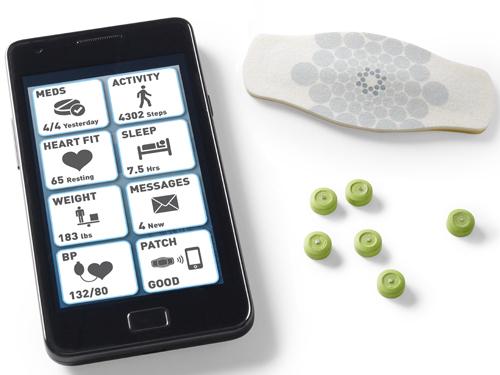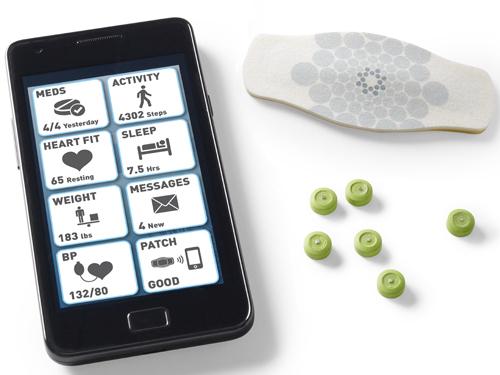Ingestible Sensor Serves as Prescription Drug Monitor
August 14, 2012

Pills may soon include more than just medication. The Food and Drug Administration recently approved an ingestible sensor that can be integrated into tablets to help people keep track of when they take their medicine.
Pharmaceutical makers can begin using the Ingestion Event Marker (IEM) from Proteus Digital Health as part of a system that helps people monitor their health electronically. The silicon sensor, which can be inserted into pills, communicates with a patch on the skin to log the time medication is taken.
"People live busy and complex lives and, as a result, often don't take their medicines correctly and thus don't benefit from their medicines as much as they could," George Savage, cofounder and chief medical officer of Proteus Digital Health, told us. "We wanted to develop a solution that would help make existing medicines more effective in real life, so people get better faster, and the industry has access to new information-based business models."

Dr. Eric J. Topol, director of the Scripps Translational Science Institute, the chief academic officer of Scripps Health, and a professor of genomics at the Scripps Research Institute, called the IEM "very innovative." He told us that only about 50 percent of medications prescribed throughout the world are actually taken.
The IEM, which is about the size of a grain of sand, includes two elements found in food: magnesium and copper. The two metals act as electrodes to form an electrochemical reaction when they contact stomach fluid. This reaction allows the sensor to communicate with the patch on the skin, which records the time and the patient's level of activity at that moment. The patch sends the information wirelessly to a smartphone application, which stores it on an Internet-based database. In addition to tracking when someone took a pill, the app records information such as the patient's heart rate, sleep patterns, and blood pressure and helps them communicate with caregivers or family members, who can help them look after their health.
Topol said the sensor "especially may be useful in seniors who have a hard time keeping track" of their health information "and people with many chronic diseases like diabetes, mental health disorders, and infections like tuberculosis."
About the Author(s)
You May Also Like
.jpg?width=300&auto=webp&quality=80&disable=upscale)


